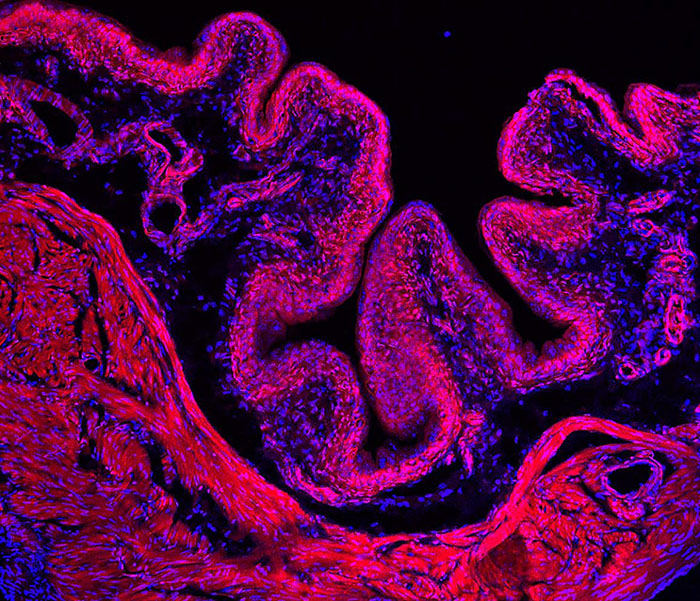Study discovers gene that helps us know when it’s time to urinate
In a National Institutes of Health-funded study involving both mice and patients who are part of an NIH Clinical Center trial, researchers discovered that a gene, called PIEZO2, may be responsible for the powerful urge to urinate that we normally feel several times a day. The results, published in Nature, suggest that the gene helps at least two different types of cells in the body sense when our bladders are full and need to be emptied. These results also expand the growing list of newly discovered senses under the gene’s control.
Urine is produced when the kidneys extract waste and excess water from the blood and send it to the bladder. Over time, it fills up and expands like a balloon, putting tension on the bladder muscles. Then, at a certain point, the body senses that it is reaching a limit, which triggers the urge to urinate.
The PIEZO2 gene contains instructions for making proteins that are activated when cells are stretched or squeezed. In this study, the researchers found that patients who are born with a genetic deficiency in PIEZO2 have trouble sensing bladder filling while experiments in mice suggested the gene plays two critical roles in this process. It may help certain bladder cells gauge expansion while also sparking neurons to relay tension signals to the rest of the nervous system.

Researchers discovered that a gene called PIEZO2 may help us sense when our bladders are full, and it is time to urinate. Above is an example of a mouse bladder used in the study.
This page was last updated on Friday, January 21, 2022